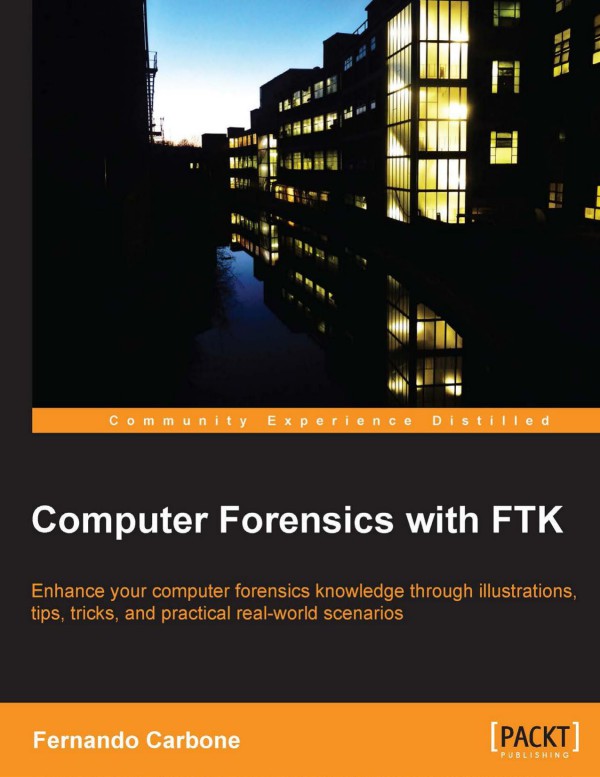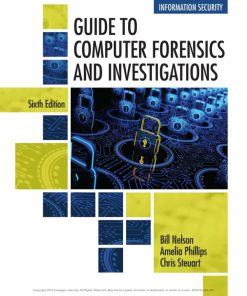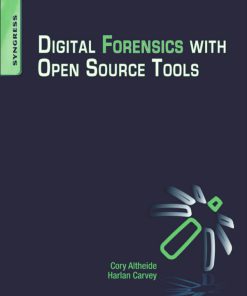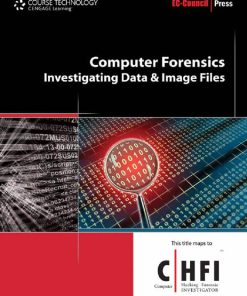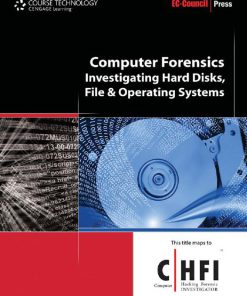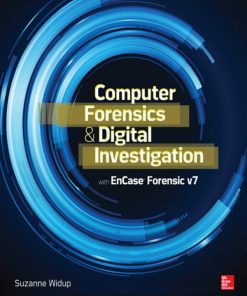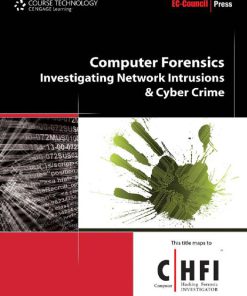Computer Forensics with FTK 1st Edition by Fernando Luiz Carbone ISBN 1783559020 9781783559022
$50.00 Original price was: $50.00.$25.00Current price is: $25.00.
Authors:Carbone, Fernando , Author sort:Carbone, Fernando , Languages:Languages:eng , Published:Published:Mar 2014
Computer Forensics with FTK 1st Edition by Fernando Luiz Carbone – Ebook PDF Instant Download/Delivery. 1783559020, 9781783559022
Full download Computer Forensics with FTK 1st Edition after payment
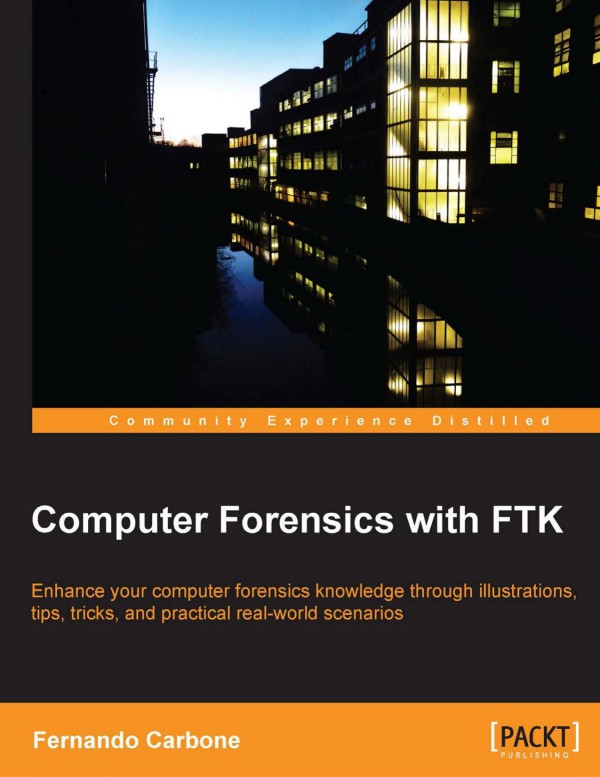
Product details:
ISBN 10: 1783559020
ISBN 13: 9781783559022
Author: Fernando Luiz Carbone
With the increase of electronic crimes and the need to constantly audit the proper use of resources, companies need qualified professionals and appropriate tools to carry out these activities. The FTK platform, with the ability to collect and analyze digital evidence quickly and with integrity, is a great solution to help professionals achieve these goals. It is extremely useful for conducting digital investigations, helping you conduct a thorough investigation through a single tool and ensure the integrity of evidence. It is hard to find technical information on this tool and that s where this book will come in handy, helping professionals perform their activities with greater excellence.
This tutorial leads by example, providing you with everything you need to use FTK and the tools included such as FTK Imager, Registry View, and PRTK in order to enhance your Computer Forensics knowledge in an easier and more efficient way.
You will be introduced to the background of Computer Forensics, which include the types of digital devices that can be acquired and how to prepare for a new case of investigation. You will become acquainted with the FTK architecture and learn how to leverage its features in order to help you find the evidence as fast as possible. Through this book, you will also learn the memory forensics technique using the memory dump feature of FTK Imager. Furthermore, you will learn how to extract some important information such as process and DLL information, Sockets, and Driver List Open Handles.
To conclude your tutorial, you will learn how to extract information from Windows Registry and how to recover passwords from the system and files. You will find this book an invaluable supplement to teach you all the steps required for the completion of investigations on digital media and to generate consistent and irrefutable evidence in court.
Computer Forensics with FTK 1st Table of contents:
Chapter 1: Introduction to Computer Forensics
- 1.1 What is Computer Forensics?
- 1.2 The Role of Computer Forensics in Cybercrime Investigation
- 1.3 Digital Evidence: Definition and Importance
- 1.4 Key Principles of Forensic Investigations
- 1.5 Overview of Forensic Tools and Software
- 1.6 Introduction to FTK (Forensic Toolkit)
Chapter 2: Setting Up FTK
- 2.1 Installing FTK and System Requirements
- 2.2 FTK Interface Overview
- 2.3 Configuration and Customization of FTK
- 2.4 Integrating FTK with Other Forensic Tools
- 2.5 Best Practices for Setting Up a Forensic Workstation
Chapter 3: Understanding Digital Evidence
- 3.1 Types of Digital Evidence
- 3.2 Categories of Data (Emails, Documents, Logs, Multimedia)
- 3.3 File Systems and Storage Media
- 3.4 Principles of Evidence Preservation
- 3.5 Chain of Custody and Evidence Handling
- 3.6 Challenges in Digital Evidence Collection
Chapter 4: Acquiring Digital Evidence
- 4.1 Methods of Data Acquisition
- 4.2 Creating Forensic Disk Images
- 4.3 Using FTK to Create Disk Images
- 4.4 The Importance of Write Blockers in Forensics
- 4.5 Handling Live Systems vs. Dead Systems
- 4.6 Verifying Data Integrity with Hashing Techniques
Chapter 5: FTK Case Manager and Organization
- 5.1 Creating and Managing Cases in FTK
- 5.2 Importing Evidence into FTK
- 5.3 Organizing and Categorizing Evidence
- 5.4 Case Data Management and Documentation
- 5.5 Handling Multiple Evidence Sources in FTK
Chapter 6: FTK Evidence Processing
- 6.1 Running Initial Searches and Indexing Data
- 6.2 File and Data Filtering Techniques
- 6.3 Examining File Metadata
- 6.4 Data Decryption with FTK
- 6.5 Identifying and Recovering Deleted Files
- 6.6 Extracting Artifacts from Operating Systems
Chapter 7: Forensic Analysis of Email and Web Data
- 7.1 Analyzing Email Data with FTK
- 7.2 Extracting Web Browsing History and Artifacts
- 7.3 Investigating Chat Logs and Social Media
- 7.4 Recovering Deleted and Hidden Emails
- 7.5 Examining Web History for Investigative Leads
Chapter 8: FTK and Mobile Device Forensics
- 8.1 Mobile Forensics Overview
- 8.2 Acquiring Data from Mobile Devices
- 8.3 FTK’s Mobile Device Data Analysis
- 8.4 Recovering Deleted Mobile Data
- 8.5 Exploring SMS, Contacts, and Location Data
Chapter 9: Advanced Data Analysis with FTK
- 9.1 Keyword Searching and Pattern Recognition
- 9.2 File Signature Analysis and Identification
- 9.3 Analyzing Encrypted Files and Password Protection
- 9.4 Advanced File Carving Techniques
- 9.5 Timeline Creation and Investigating Event Sequences
- 9.6 Investigating Registry Artifacts and Logs
Chapter 10: Reporting and Presenting Forensic Findings
- 10.1 Forensic Report Writing Techniques
- 10.2 Generating Reports in FTK
- 10.3 Best Practices for Documenting Findings
- 10.4 Presenting Evidence in Court
- 10.5 Handling Legal and Ethical Issues in Forensics
Chapter 11: FTK Integration with Other Forensic Tools
- 11.1 Integrating FTK with EnCase and Other Tools
- 11.2 Using FTK in Multi-Tool Forensic Investigations
- 11.3 Automating Forensic Workflows with FTK
- 11.4 Using FTK for Network and Cloud Forensics
- 11.5 Working with Third-Party FTK Plugins
Chapter 12: Case Studies and Real-World Applications
- 12.1 Case Study: Investigating a Cybercrime Incident
- 12.2 Case Study: Data Breach and Insider Threat Investigation
- 12.3 Case Study: Analyzing Child Exploitation Materials
- 12.4 Case Study: Corporate Fraud Investigation
- 12.5 Lessons Learned from Successful FTK Investigations
Chapter 13: Future Trends in Digital Forensics and FTK
- 13.1 Emerging Technologies in Computer Forensics
- 13.2 The Role of Artificial Intelligence in Forensics
- 13.3 Cloud and IoT Forensics: FTK’s Evolving Role
- 13.4 Ethical and Legal Considerations in Digital Forensics
- 13.5 Preparing for Future Forensic Investigations
People also search for Computer Forensics with FTK 1st:
ftk computer forensics
a computer forensics technician is also known as
a forensic workstation consisting of a laptop
a computer forensics laboratory is assigning
a cyber forensic investigator is analyzing a disk image
You may also like…
eBook PDF
Digital Forensics With Open Source Tools 1st Edition by Cory Altheide ISBN 1597495867 9781597495868

